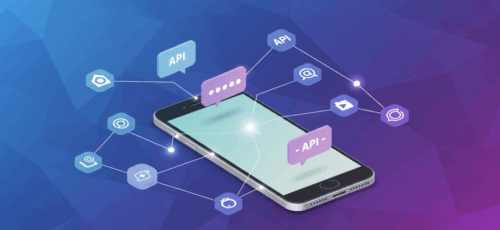CPaaS voice APIs enable developers to embed real-time calling capabilities into applications without building telecom infrastructure.
- Voice APIs automatically handle call routing, WebRTC connections, and SIP protocols
- Major providers differ significantly in latency, codec support, and geographic coverage
- Implementation typically requires only a few lines of code with proper SDKs
- Choose providers based on your specific technical requirements and use case demands
Modern applications demand seamless voice communication capabilities, yet traditional telephony systems are complex, expensive, and poorly suited for cloud-first development. Communications Platform as a Service (CPaaS) solves this challenge. If you’re wondering what is CPaaS, it’s a cloud-based solution that gives developers access to APIs for embedding voice functionality directly into applications.
According to recent market research, the voice API market reached $1.2 billion in 2024 and is projected to grow at a 12.5% CAGR through 2033. This growth reflects the increasing demand for real-time communication solutions across industries, from healthcare to e-commerce.
For developers building voice-enabled applications, understanding CPaaS voice APIs is essential. Whether you’re creating a contact center solution, adding click-to-call functionality, or building IoT device communication, voice APIs provide the foundation for reliable, scalable communication without telecom expertise.
What is Communications Platform as a Service (CPaaS)?
CPaaS is a cloud-based platform that provides developers with APIs and SDKs for integrating real-time communication features into applications. Unlike traditional telecom infrastructure, which demands costly hardware and specialized expertise, CPaaS simplifies voice network complexity by turning it into easy-to-use API calls.
A CPaaS voice API enables applications to make and receive phone calls over the internet using Voice over Internet Protocol (VoIP) and Session Initiation Protocol (SIP). These APIs connect to the Public Switched Telephone Network (PSTN), allowing seamless communication between internet-based applications and traditional phone systems.
The key advantage for developers is simplicity. Instead of managing telecom infrastructure, negotiating carrier relationships, or understanding complex signaling protocols, you can integrate voice capabilities with just a few lines of code. CPaaS providers handle the backend complexity while exposing clean, RESTful APIs for call management.
Why Voice APIs are Essential for Modern Applications
The shift toward distributed workforces and digital-first customer interactions has made voice communication essential. Industry data shows that the global voice and speech recognition market reached $20.25 billion in 2023, driven by technological advancements and rising adoption of voice-enabled devices.
Programmable voice APIs address several developer challenges:
- Infrastructure Complexity: Traditional telephony requires understanding SIP protocols, media gateways, and carrier interconnections. Voice APIs condense this complexity into simple HTTP requests.
- Scalability Limitations: Physical phone lines and PRI circuits have fixed capacity. Cloud-based voice APIs scale dynamically, handling traffic spikes without hardware constraints.
- Development Speed: Building voice functionality from scratch can take months. With voice APIs, developers can implement calling features in hours or days.
- Global Reach: Establishing international voice connectivity traditionally requires multiple carrier relationships. CPaaS providers offer global coverage through single API integrations.
The business benefits are equally compelling. Companies using voice APIs report improved customer satisfaction, reduced infrastructure costs, and faster time-to-market for communication features.
How CPaaS Voice APIs Work Under the Hood
Understanding the technical architecture of voice APIs for developers helps in making informed implementation decisions. In some CPaaS platforms, voice functionality is built around SIP trunking rather than direct call initiation via API endpoints.
In these cases, developers use APIs to provision phone numbers and configure inbound call routing. Outbound calls are handled through SIP, initiated by a PBX system, softphone, or SIP-enabled application that connects to the provider’s voice infrastructure.
Call Flow Architecture:
- Signaling Layer: SIP establishes and manages call sessions
- Media Layer: RTP streams transmit the voice audio
- Control Layer: APIs manage number provisioning, inbound routing, and configuration
- Gateway Layer: Bridges VoIP traffic with the traditional Public Switched Telephone Network (PSTN)
Here’s an example SIP configuration that registers a PBX or SIP client with a voice service provider:
javascript
// Configure an inbound voice route with Provider
const routeData = {
“data”: {
“type”: “route”,
“attributes”: {
“route_type”: “host”,
“value”: “myserver.example.com:5060”,
“alias”: “Production SIP Server Route”
}
}
};
const response = await fetch(‘https://api.provider.com/v2/routes’, {
method: ‘POST’,
headers: {
‘Authorization’: ‘Basic ‘ + btoa(‘accessKey:secretKey’),
‘Content-Type’: ‘application/vnd.api+json’,
‘Accept’: ‘application/vnd.api+json’
},
body: JSON.stringify(routeData)
});
const route = await response.json();
console.log(‘Route created:’, route.data.id);
The API handles complex tasks like codec negotiation, NAT traversal, and DTMF processing automatically. For WebRTC-based implementations, the API manages STUN/TURN servers and ICE candidate exchange, enabling browser-to-phone connectivity.
Core Voice API Capabilities in CPaaS Platforms
Modern CPaaS platforms offer comprehensive voice functionality through specialized APIs. Understanding these capabilities helps developers choose the right features for their applications.
Inbound and Outbound Call Management
Voice APIs provide programmatic control over call routing and number management. With Flowroute, developers configure inbound routes that determine where calls are directed when they reach your numbers.
python
# Python example for managing phone number routes
import requests
import base64
def assign_route_to_number(phone_number_id, route_id, access_key, secret_key):
credentials = base64.b64encode(f”{access_key}:{secret_key}“.encode()).decode()
route_assignment = {
“data”: {
“type”: “route”,
“id”: route_id
}
}
response = requests.patch(
f”https://api.provider.com/v2/numbers/{phone_number_id}“,
headers={
‘Authorization’: f’Basic {credentials}‘,
‘Content-Type’: ‘application/vnd.api+json’
},
json=route_assignment
)
return response.json()
Interactive Voice Response (IVR) Integration
IVR systems automate call handling through programmatic menu systems. Voice APIs enable dynamic IVR creation with speech recognition and DTMF processing.
Call Recording and Analytics
Modern voice APIs provide built-in recording capabilities with real-time transcription and sentiment analysis. This data helps improve customer service and ensures compliance requirements.
Global Number Management
CPaaS platforms offer phone number provisioning across multiple countries, enabling businesses to establish local presence worldwide. APIs automatically handle number purchasing, porting, and configuration.
Real-time Call Control
During active calls, APIs enable features like call transfer, conference creation, and media manipulation. Real-time control enables sophisticated call center functionality within custom applications.
Comparing CPaaS Voice API Providers: Technical Specifications
Selecting the right CPaaS provider requires evaluating technical capabilities against your specific requirements.
Here’s a comprehensive comparison of key specifications:
| Feature | Flowroute | Twilio | Vonage | Telnyx | Bandwidth | Considerations |
| Supported Codecs | Multiple | Multiple | Multiple | Multiple | Multiple | Look for G.711, G.729, Opus support |
| WebRTC Support | Yes | Yes | Yes | Yes | Limited | Essential for browser-based calling |
| SIP Compatibility | Full | Full | Full | Full | Full | Required for PBX integration |
| Global Coverage | US/ Canada Focus | Extensive | Extensive | Regional | Regional | Consider your geographic needs |
| Reliability Features | HyperNetwork™ | Standard | Standard | Standard | Standard | Look for redundancy and failover |
| Pricing Model | Pay-as-you-go | Per minute | Per minute | Per minute | Per minute | Compare based on your usage patterns |
| SDK Languages | Multiple | Multiple | Multiple | Multiple | Multiple | Ensure your stack is supported |
| Security Protocols | Industry Standard | Industry Standard | Industry Standard | Industry Standard | Industry Standard | All should support TLS, SRTP encryption |
Performance Considerations:
- Latency: Critical for real-time applications. Look for providers with sub-200ms latency in your target regions.
- Reliability: Check SLA guarantees. The industry standard is 99.9% uptime.
- Scalability: Ensure the platform can handle your peak concurrent call requirements.
- Geographic Presence: Providers with local data centers typically offer better performance.
Voice API Integration: From Setup to Production
Implementing voice APIs successfully requires following established best practices.
Here’s a comprehensive guide for developers:
1. Account Setup and API Key Generation
Begin by creating developer accounts with your chosen CPaaS provider. Most platforms offer free trial credits for testing. Secure your API keys using environment variables and never expose them in client-side code.
2. SDK Installation and Configuration
Install the appropriate SDK for your programming language:
bash
# Python example for Provider
pip install provider_numbers_and_messaging
Configure the SDK with your credentials:
python
import provider_numbers_and_messaging
from provider_numbers_and_messaging.models import Message
# Configure API credentials
basic_auth_user_name = ‘your_access_key’
basic_auth_password = ‘your_secret_key’
# Initialize the client
client = provider_numbers_and_messaging.APIClient(basic_auth_user_name, basic_auth_password)
3. Basic Voice Route Implementation
Start with configuring inbound call routing:
python
def create_sip_route(client, server_address, route_alias):
“””Create a new SIP route for inbound calls”””
try:
routes_controller = client.routes
route_body = {
“data”: {
“type”: “route”,
“attributes”: {
“route_type”: “host”,
“value”: server_address,
“alias”: route_alias
}
}
}
result = routes_controller.create_an_inbound_route(route_body)
print(f”Route created successfully: {result.data.id}“)
return result.data.id
except Exception as e:
print(f”Route creation failed: {e}“)
raise e
4. Error Handling and Failover Logic
Implement robust error handling for network issues, invalid configurations, and API rate limits:
python
import time
from requests.exceptions import RequestException
def reliable_route_creation(client, route_data, max_retries=3):
“””Create route with retry logic for resilience”””
for attempt in range(max_retries):
try:
return create_sip_route(client, **route_data)
except RequestException as e:
if attempt < max_retries – 1:
wait_time = 2 ** attempt # Exponential backoff
print(f”Attempt {attempt + 1} failed, retrying in {wait_time}s…”)
time.sleep(wait_time)
else:
print(f”All {max_retries} attempts failed”)
raise e
5. Testing and Quality Assurance
Develop comprehensive testing strategies including unit tests for API integrations and end-to-end tests for call flows. Use test phone numbers provided by CPaaS platforms to avoid charges during development.
6. Production Deployment Best Practices
Implement proper monitoring, logging, and alerting. Use webhook validation to ensure requests originate from your CPaaS provider. Consider implementing circuit breaker patterns for resilience.
Real-World Use Cases for CPaaS Voice APIs
Understanding practical applications helps developers identify opportunities for voice integration in their projects.
Click-to-Call Implementation: E-commerce sites use voice APIs to enable instant customer support connections. When users click a “Call Now” button, the system initiates a call between the customer and support agent without revealing either party’s actual phone number.
Contact Center Voice Routing: Modern contact centers leverage voice APIs for intelligent call distribution based on agent skills, customer priority, and real-time analytics. APIs enable features like queue callbacks and estimated wait time announcements.
IoT Device Communication: Smart home devices and industrial IoT systems use voice APIs for two-way communication. Security systems can place automated calls when alarms trigger, while smart appliances can provide voice status updates.
python
# Example: SMS notification system using Provider
def send_alert_notification(client, alert_message, phone_numbers):
“””Send SMS alerts to multiple recipients”””
messages_controller = client.messages
for number in phone_numbers:
message_request = {
“data”: {
“type”: “message”,
“attributes”: {
“to”: number,
“from”: “your_provider_number”,
“body”: alert_message
}
}
}
try:
result = messages_controller.send_a_message(message_request)
print(f”Alert sent to {number}: {result.data.id}“)
except Exception as e:
print(f”Failed to send alert to {number}: {e}“)
Technical Considerations for Voice API Selection
Successful voice API implementation requires careful evaluation of technical requirements and constraints.
Latency and Call Quality: Voice communication is sensitive to delay and packet loss. Evaluate providers based on their network infrastructure and geographic presence. Applications requiring sub-150ms latency should prioritize providers with edge computing capabilities.
Security and Compliance: Voice communications often handle sensitive information. Ensure your provider supports proper encryption protocols, including TLS for signaling and SRTP for media. For healthcare or financial applications, verify HIPAA or PCI compliance certifications.
Scalability and Redundancy: Plan for traffic growth and peak usage scenarios. Look for providers offering auto-scaling capabilities and multiple data center deployments. Consider implementing circuit breaker patterns to handle provider outages gracefully.
Developer Experience: Evaluate documentation quality, SDK completeness, and support responsiveness. Well-designed APIs with comprehensive examples accelerate development and reduce integration time.
Getting Started with Voice APIs: Next Steps
CPaaS voice APIs are powerful tools for embedding voice communication into applications. Success depends on choosing the right provider for your technical requirements and implementing proper architecture patterns for reliability and scalability.
Start with a proof of concept using free trial credits from major providers. Focus on core functionality first, then gradually add advanced features like recording, transcription, and analytics. Consider the long-term scalability implications of your architecture decisions.
Key Success Factors:
- Choose providers with a strong presence in your target geographic markets
- Implement comprehensive error handling and retry logic
- Plan for compliance requirements early in the development process
- Continuously monitor call quality metrics and user feedback
Frequently Asked Questions
What’s the difference between WebRTC and SIP in voice APIs? WebRTC enables browser-to-browser calling without plugins, while SIP is a signaling protocol for traditional telephony. Most modern voice APIs support both, with WebRTC for web applications and SIP for PBX integration.
How do I handle voice API security and encryption? Voice APIs should use TLS for signaling encryption and SRTP for media encryption. Implement webhook validation, secure API key storage, and consider additional authentication for sensitive applications. Follow WebRTC security best practices, including proper firewall configuration and access controls.
What are typical latency expectations for voice APIs? Acceptable latency varies by use case. Interactive applications should target under 150ms, while one-way notifications can tolerate 300–500ms. Geographic distance between users and API infrastructure significantly impacts latency.
How do I implement failover for voice API calls? Implement retry logic with exponential backoff for transient failures. Consider using multiple CPaaS providers for geographic redundancy. Monitor API health endpoints and implement circuit breaker patterns to gracefully handle extended outages.
The Future of Voice Starts with the Right CPaaS Approach
Programmable voice APIs provide developers with unprecedented opportunities to create sophisticated communication applications without traditional telecom complexity. As the market continues growing, driven by remote work trends and digital transformation initiatives, voice APIs become increasingly essential for competitive applications.
Success with voice APIs for developers requires understanding both technical capabilities and business requirements. The providers and patterns discussed in this guide provide a foundation for building reliable, scalable voice communication features.
Flowroute offers developer-friendly voice APIs with comprehensive documentation, flexible pricing, and industry-leading reliability backed by our patented HyperNetwork™ technology. Get started with your free account today and experience the power of modern voice communication.

Mitch leads the Sales team at BCM One, overseeing revenue growth through cloud voice services across brands like SIPTRUNK, SIP.US, and Flowroute. With a focus on partner enablement and customer success, he helps businesses identify the right communication solutions within BCM One’s extensive portfolio. Mitch brings years of experience in channel sales and cloud-based telecom to every conversation.






